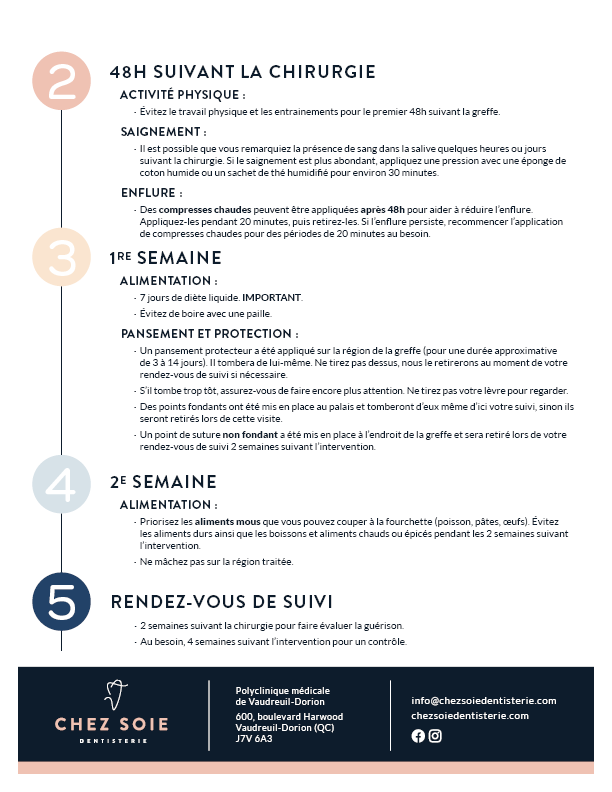 Gum Grafts
Gum Grafts
Gum grafting helps treat or prevent recession or tooth loss.
Each patient is born with a particular type of gum surrounding their teeth. For some, this gum is thick and strong, which provides added protection for the teeth. For others, the gum may be quite thin and crumbly, making the patient more vulnerable to future gum loss. Some patients also have poor oral hygiene habits and may themselves contribute to damaging the gingival mucosa through overly aggressive techniques without knowing it. Whether to protect vulnerable gums or to repair the damage done, a gum graft could help you!
How do I correct my loose teeth?
Recession can cause dentin hypersensitivity, and can cause an aesthetic problem. The loosening can also progress quickly without the patient even realizing it. This is why it may be indicated to use a gum graft to cover these sections of tooth roots that should not be exposed, making them more prone to root decay.
Your dentist determines with you what type of gum graft is indicated according to your situation. He may therefore suggest covering the roots if your condition still allows it. In some cases, the gingival loss is too great and it is almost impossible to completely cover the lost tissue.
How to prevent root loss or recession?
It is also possible to prevent loosening by doing a GAL type graft (free autogenous graft). This type of graft is, according to the scientific literature, the most predictable and stable graft in the long term. By thickening the tissues around the affected teeth, this graft allows us to strengthen the support of the teeth, prevent pain, reduce the possibility of accumulation of biofilm (dental plaque) and/or tartar, and reduce the mobility of the teeth and improve the aesthetics of the mouth.
Postoperative care must be strictly followed to promote healing (in French).




